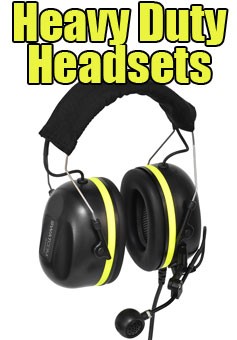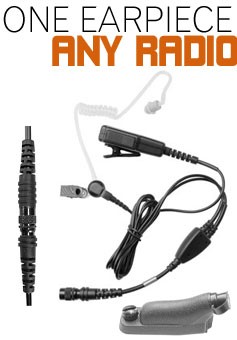
In our increasingly noisy world, finding effective hearing protection has never been more crucial. From bustling city streets to loud workplaces and even our leisure activities, our ears are constantly bombarded with potentially harmful levels of noise. Protecting our hearing is essential to maintain our quality of life and avoid the long-term consequences of noise-induced hearing loss. This document aims to explore various hearing protection methods, their effectiveness, and how to select the best option based on individual needs and environments. Whether you're a professional in a noisy industry, a musician, or simply someone looking to preserve their hearing health, understanding the most effective hearing protection is the first step towards safeguarding this vital sense.
Types of Hearing Protection PPE
There are four main types of PPE (Personal Protective Equipment) hearing protection available, each designed to mitigate the risks associated with exposure to hazardous levels of noise in different environments:
- Disposable ear plugs: Made from foam or silicone, these are inserted into the ear canal to block out noise. They are lightweight, inexpensive, and designed for one-time use.
- Corded or banded ear plugs: Similar to disposable ear plugs, these are connected by a cord or band to keep them together, making them harder to lose and easier to carry when not in use.
- Earmuffs (Ear Defenders): These fit over the entire outer ear to form an air seal, thus reducing noise significantly. They can be more comfortable to wear for longer periods and are adjustable for a better fit.
- Helmet mounted ear muffs/defenders: These are earmuffs that attach to safety helmets. They are particularly useful in construction or industrial settings where helmets are also required as PPE.
Over-ear vs In-ear
When comparing in-ear and over-ear hearing protection, the key distinction lies in their design and how each type mitigates noise exposure. In-ear hearing protection, such as disposable and corded ear plugs, fits directly into the ear canal.
This close proximity allows them to effectively block out noise by creating a seal within the ear, making them particularly effective for high-frequency noise reduction. They are discreet, lightweight, and ideal for environments where wearing bulkier protection is impractical.
Over-ear hearing protection, exemplified by earmuffs and helmet-mounted ear muffs, encloses the entire outer ear within cushioned cups, creating an air seal that lowers noise levels across a broader range of frequencies. This type of protection is generally more comfortable for prolonged use and can be easily adjusted to ensure a proper fit.
Over-ear protection is well-suited for environments with variable noise levels or where the removal and reapplication of protection are necessary, providing an easily identifiable visual assurance of hearing protection compliance.
Safety Standards
The Health and Safety Executive (HSE) in the UK hosts a comprehensive section dedicated to "Noise at Work", which provides vital information concerning rights and protections for employees regarding hearing safety. In the UK, there are approximately 17,000 individuals who suffer from work-related hearing issues, such as deafness or tinnitus, conditions often attributed to exposure to excessive noise levels in the workplace.
To address this, the Control of Noise at Work Regulations 2005 were introduced, superseding the previous 1989 regulations as of April 6, 2006. These regulations mandate employers to either control the noise exposure levels or supply appropriate hearing protection PPE to safeguard their employees' hearing. It's critical to recognize that PPE should be considered the 'last line of defence' against noise-induced hearing damage.
To ensure the safety and efficacy of hearing protection equipment, there are specific EN Safety standards that must be adhered to by workers, the self-employed, businesses, and companies alike. As a BSiF Registered Safety Supplier, XAMAX® is committed to supplying only approved hearing protection that meets and exceeds the set standards, including:
- EN 352-1: 2002 - Hearing protectors - Ear muffs
- EN 352-2:2002 - Hearing protectors - Ear plugs
- EN 352-3:2002 - Hearing protectors - Ear muffs attached to a safety helmet
- EN 458:2004 - Hearing protectors - Selection, use, care and maintenance
Procuring and utilizing ear protection that aligns with these safety standards is crucial. Ultimately, the key challenge lies in the consistent application of wearing such protective gear in noisy work environments.
What Noise level Requires Hearing Protection
When considering the levels of noise that necessitate hearing protection, it's imperative to understand various thresholds as defined by regulatory authorities. The "Action Level" at which hearing protection becomes necessary is quantified at 85 Decibels (dB). This is the point at which employers must start implementing hearing conservation measures.
Beyond this, the Occupational Safety and Health Administration (OSHA) stipulates an 8-hour average exposure limit of 90 dB. It is crucial that noise levels do not exceed this limit over the course of an average workday to prevent hearing impairment.
At a threshold of 100 dB, it is recommended that exposures should not last longer than 15 minutes without adequate hearing protection. This is due to the significantly higher risk of hearing damage that such noise levels pose. More severe still, regular exposure to noise levels of 110 dB for more than 1 minute risks permanent hearing loss.
Recognizing these crucial thresholds underscores the importance of proper and timely application of hearing protection measures in the workplace to safeguard employees' auditory health.
Why Shouldn't you Wear Hearing Protection all the Time
Over-protecting the ears can lead to significant difficulties with verbal communication and the ability to hear crucial warning signals or alarms. This isolation from one's environment not only impairs situational awareness but can also increase the risk of accidents and injuries.
Therefore, selecting the appropriate level of hearing protection that balances the need to reduce harmful noise while still allowing for the perception of essential sounds is critical for safety.
Choosing the Right Protection
When selecting the ideal hearing protection, it's imperative to consider the unique environments and the specific characteristics of the noise in your workplace. The level of noise exposure, as well as the types of noise needing mitigation, are critical factors. For instance, if you're working in a loud nightclub, the hearing protection required would differ significantly from what is needed in a construction setting.
Nightclubs primarily feature continuous music at high decibels, necessitating ear protection that can effectively filter out music and crowd noise, while still allowing for communication. This example underscores the importance of choosing hearing protection that is not only compliant with safety standards but is also tailored to the noise profiles of your specific work environment.
For those particularly harsh noise environments, or where the utmost in hearing protection is necessary, it's worth considering the combined use of earplugs and earmuffs. This dual-layer approach leverages the strengths of both types of protection. Earplugs provide direct noise blocking within the ear canal, offering an NRR (Noise Reduction Rating) of between 22 and 33dB. Earmuffs, on the other hand, add an external layer of protection, with NRR values ranging from 20 to 30dB.
Together, they create a comprehensive barrier against noise, significantly reducing the risk of hearing damage. This combined method is especially beneficial in scenarios where noise levels exceed the protective capacity of either earplugs or earmuffs alone, providing an enhanced shield against the potentially damaging effects of prolonged noise exposure.
Working out Sound Protection
When working in an environment where you're exposed to noise levels of 100dB. If you're wearing hearing protection that reduces noise by 33dB, you'll actually experience noise at around 87dB. This calculation is done by subtracting 7 from the hearing protection level, halving that result, and then subtracting it from the initial noise level. Similarly, using a hearing protection device rated at 27dB would effectively lower the environmental noise by 10 decibels.
Comfort and Fit
Comfort and fit are crucial factors in ensuring that employees consistently use hearing protection in noisy work environments. Despite the apparent necessity of wearing hearing protection, discomfort and poor fit are common reasons employees may opt not to use their personal protective equipment (PPE). Achieving a comfortable yet secure fit can significantly enhance the likelihood of compliance. For earplugs, this means ensuring a tight seal within the ear canal, which is essential for optimal performance. On the other hand, earmuffs require a snug fit against the head without any obstruction from hair or clothing to be effective.
When using foam-bodied earplugs, it's important to insert the majority of the plug into the ear canal for the best protection. A simple test to ensure correct fitment is to cup your hands over your ears after insertion; if the sound level does not change upon removing your hands, the earplugs are properly fitted. If there's a noticeable difference in sound, it's a clear indication that the earplugs need to be adjusted.
There's a variety of options on the market, including disposable earplugs and banded ones, designed with comfort in mind to encourage regular use. Similarly, earmuff brands offer features such as adjustable straps and soft, cushioned ear pads to enhance comfort. For those wearing ear muffs attached to safety helmets, the overall comfort is influenced by the helmet's fit and comfort.
It's advisable to experiment with different types of hearing protection to identify the most comfortable and effective option. This approach not only ensures that the hearing protection fits well but also promotes its use among employees, thereby safeguarding their hearing health.



























